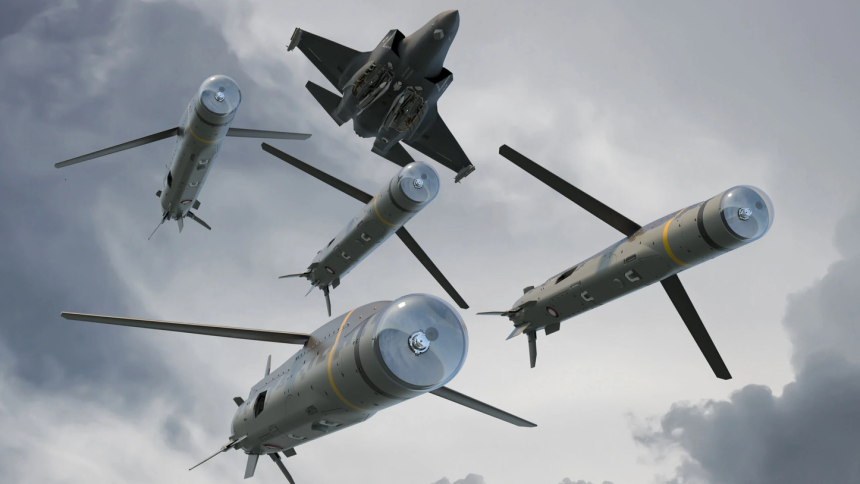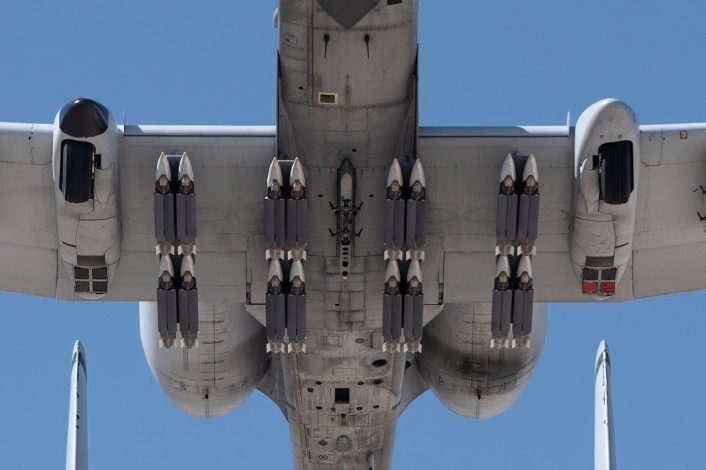The need for the Extended Range Attack Munitions (ERAMs) arises from the advantages Western standoff weapons have provided to Ukraine. However, these benefits could not be fully realized due to the limited availability of such weapons.
The United States will undertake the development of a new cheap, mass produced, high-precision aircraft-dropped munition with a range of more than 400 km for Ukraine. This was revealed in an RFP (Request for Proposal) from the U.S. Air Force’s LCMC (Life Cycle Management Center) Weapons Directorate, which “seeks to fund the initial phase of development of a new aviation munition called ERAM (Extended Range Attack Munition).”
The document states that the new munition “will be key to enhancing Ukraine’s capabilities and should be an affordable weapon type adapted for mass production.” The kinematic and technical performance criteria reflect all the tactical and technological lessons learnt during the course of the two and a half years of the war in Ukraine.
Interestingly, the ERAM project is not completely new. In fact, the US Air Force first mentioned the ERAM when it released a RFI (Request for Information) for the same weapon earlier this year. The service received proposals from 16 companies following the announcement, and now the RFP is seeking full technical and financial proposals. The companies however have not been identified.
Jet-Powered JDAM Aims To Turn Bombs Into Cruise Missiles
The company is pitching the Powered Joint Direct Attack Munition (PJDAM) as a flexible and lower-cost cruise missile that can be used to attack targets on land and ones at sea. It could help countries, including the United… pic.twitter.com/0UxcWNGMcT
— Havoc Six (@Havoc_Six) October 25, 2023
Cheap, scalable and modular
According to the documents, the ERAM is supposed to employ a commercial modular, open architecture and deliver “affordable long-range effects.” The RFP did not elaborate on the requirements, however the RFI specified as minimum requirements a 500 lb (227 kg) class weapon, capable of blast, fragmentation and limited penetration effects and with variable fuze options.
The RFI also specified that the munition should have a range of at least 250 NM (463 km) and a speed of at least Mach 0.6. A specific performance requirement is a navigation system capable of operating in a GPS degraded environment, able to provide accuracy with a CEP (Circular Error of Probability) within 10 m also in GPS degraded conditions.
An important requirement for ERAM is the ability to rapidly scale up production to more than 1,000 munitions per year by 24 months after contract signing. The need for an open architecture reflects the intent to be able to rapidly make changes and tweaks following lessons learnt on the battlefield.
Current weapons
Existing weapons systems that broadly meet the ERAM’s requirements include Boeing’s PJDAM (Powered Joint Direct Attack Munition), which adds a fuselage and wing kit, a Kratos-TDI-J85 engine and guidance system to a 500 lb bomb, transforming it into a mini cruise missile. Reports noted the PJDAM’s potential as an “effective substitute for land or sea-attack cruise missile,” with an average unit cost between $25,000 to $30,000, much lower than the AGM-158 JASSM’s (Joint Air-to-Surface Standoff Munition) $1 million.
Another munition is the Gray Wolf program that the Pentagon signed separately with Lockheed Martin and Northrop Grumman in Dec. 2017. The experimental low-cost cruise missile can be deployed as a swarm to operate against IAD (Integrated Air Defense) networks. The U.S. Air Force (USAF) also wants a modular weapon that can readily accept upgrades as well as different payloads, ranging from conventional explosive warheads to EW (Electronic Warfare) packages.
Another candidate is the USN’s U.S. Navy’s (USN) MACE (Multi-mission Affordable Capacity Effector) program, for which the service sought industry assistance in February this year. The cost-effective, air-launched, extended-range, anti-ship weapon should have “increased range at lower costs” and integrate a “high-maturity propulsion system with proven payloads.” The missile should be capable of being launched from the F/A-18E/F and F-35A/C and complement the LRASM (Long-Range Anti-Ship Missile), the naval strike derivative of the AGM-158 JASSM.
Needed against Russia
The ERAM’s specified need for Ukraine appears even more customized for the requirements of that battlefield, specifically for the Russian successful EW (Electronic Warfare) use that diminished the success of multiple Western weapons. Some exceptions are the GBU-39 SDB (Small Diameter Bomb) and the French AASM Hammer, which have found some more success compared to other munitions.
The need for the Extended Range Attack Munitions (ERAM) stems from the significant advantages Western standoff weapons provided to Ukrainian forces. However, these benefits were limited by the small number of available weapons, as they were sourced from US and European inventories. By manufacturing ERAM in large quantities specifically for Ukraine, the Ukrainian Air Force will no longer be constrained in their ground-attack operations, avoiding the current situation where a complex target evaluation is necessary to prevent wasting limited munitions.
This problem is further complicated by the meager numbers of UkrAF MiG-29s, Su-27s and/or Su-24 Fencers, which are currently the launch platform for the air-launched weapons donated to Ukraine. The arriving F-16s are expected to alleviate this situation to a great extent.
Conclusion
The other programs mentioned above like MACE, Gray Wolf and now ERAM bear testament to the need for scalable and affordable munitions that can challenge larger and costlier advanced systems, offering an asymmetric advantage.
As shown by the air war over Ukraine which continues to rapidly diminish Western AD missiles to counter Russian drone and missile attacks, the occasional hit on Russian warships in the Black Sea with Ukrainian kamikaze drone boats, the overwhelming of coalition warships against swarms of Houthi missile and drones in the Red Sea,and the massive cost of intercepting Iranian UAVs, cruise and ballistic missiles over Israel has shown that high numbers of weapons at low cost is key in this new type of warfare.
But moreover, it is the ability to manufacture and replenish expended weapons’ stocks that has injected an industrial element which decides the strategic outcome of any war. The USAF and USN would prefer using massive volleys of affordable munitions in an opening stage of any conflict, employing high volumes of fire to inform the tactics and technical tweaks required while employing their flagship platforms.
As previous reports by The Aviationist have shown, Moscow currently has a greater industrial capability to keep churning out big and small weapons, compared to the destruction of Ukraine’s defense industry and limitations of Western defense industrial base. The ERAM program should be seen in this light.










